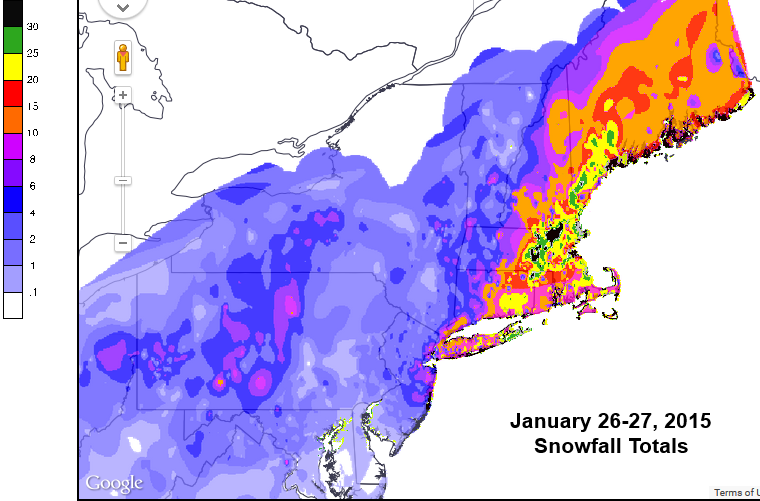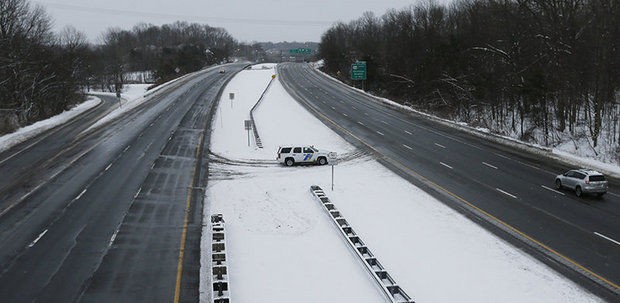Predict the Future Why Your Business Should Hire a Meteorologist
Post on: 4 Август, 2015 No Comment

What would you do if you could predict the future? This is not a rhetorical question.
As weather-forecasting technology improves, businesses are able to anticipate weather events with greater accuracyand make decisions that give them competitive advantage.
Using the weather to anticipate trends is nothing new. But traditionally, it was commodity traders that brought in the weathermennot retailers, restaurants, or hardware storesto predict weather events. They did so in order to assist the firm’s trading wings to make informed decisions based on the need for oil in certain markets. For example, if you can predict that it’s going to be a chilly day in Ohio, you may want to bet that natural gas prices will go up in Columbus. After all, as demand goes up, so does the price. Oil meteorology even got a shout-out in The Social Network. when Jesse Eisenberg, playing Mark Zuckerberg, talks about his friend Eduardo Saverin, who allegedly made $300,000 in one summer by predicting oil futures. He likes meteorology, Zuckerberg says.
Now, savvy businesses are picking up on weather patterns by exploiting more precise weather reporting in order to make logistical decisions. Specifically, they’re more accurately targeting consumers when advertising their wares in real-time. Dapper, a Yahoo-owned display advertising agency, recently partnered with the San Fransisco-based Weather Underground, the country’s first online weather service, to predict weather patterns in local markets. Once Dapper identifies a current trend, it generates display ads to match the weather in particular regions. In other words, a user browsing the Web during a rainstorm in Tulsa might see advertisements for rain boots from her local shoe store, while a user in a heat wave in Phoenix would be more likely to see an ad for sun block or a Slip ‘n Slide. The result amounts to the next step in consumer targeting; that is, find the right product for the right consumer, and now, at the right time.
Richard Lowden, the vice president of sales and advertising for Weather Underground (which has no affiliation to the radical organization in the late 1960s) says that businesses must begin to recognize the need for better weather reporting in order to remain competitive. Quite frankly, I don’t think businesses are thinking about the [weather] all that much and responding to it accordingly, he says. What we’re trying to do is increase the awareness and help people be smarter business people.
The Campbell’s Soup company, for instance, keeps a Misery Index, in which radio ads are sent to markets experiencing inclement weather events. According to Ad Age. when the particular region reaches five percent on the index, Campbell’s increases its ads for chicken soup over the next week.
Planalytics, a Business Weather Intelligence firm based in Wayne, Pennsylvania, supplies weather data to a host of organizations small and large, including Campbell’s. Scott Bernhardt, the company’s chief operating officer, says this type of data and analysis has become an invaluable resource to many of his clients. During rain or snow, he says, Campbell’s know that no matter what, you’re going to be buying soup. But they want it to be Campbell’s soup. They work hard to get that name and logo into your head before you go shopping.
Planalytics is somewhat of an anomaly in the business weather intelligence industry. While most firms offer two-to-three week weather forecasts, Planalytics offers weather predictions as far ahead as 11 months with, it claims, 70 to 80 percent accuracy. Skeptics have cast doubt over this claim, but perhaps Planalytic’s client list speaks for itself: Walmart, Kohl’s, Subway, and Perry Ellis all pay for Planalytics products. The company also provides weather information to small businesses through various co-op associations. It’s funny how so many retailers don’t get it, Bernhardt says. They use weather as an excuse, and that’s not the case at all. Weather is not an excuse: it’s a reason. If you’re in New York today, do you really feel like buying a pair of shorts? It’s a reason you’re not buying shorts.
Land’s End, the subsidiary of Sears based in Dodgeville, Wisconsin, that sells everything from shorts to parkas, uses Planalytics to optimize the exact date when catalogs are shipped. If it’s snowing outside, people will have a winter mindset, said Chris Pople, a planning analyst for Land’s End at recent conference organizaed by Planalytics. Pople notes that catalogs are typically shipped every four-to-six weeks, but if a favorable weather event can be predicted, that shipment may be delayed or sped up. We don’t want to be launching a book of linen clothing if it’s raining, he says.

Restaurants, too, are getting in on the weather game. A National Restaurant Association survey reported that nine out of 10 restaurants say that local weather conditions influence their sales and customer counts. So, why not do something about it?
Panera Bread, the fast food chain headquarted in St. Louis, uses weather data compiled by the Weather Underground in its point-of-sale system to record and analyze when certain dishes sell well. If, for instance, Panera finds that its roast beef sandwiches sell best when it’s 65 degrees outside, the company can then promote that product when it’s 65 degrees outside. They can actually do something about [the weather], says Richard Lowden. All of those things are now in play because of technologymaybe they’d be able to change the chalk on the board in the past, but beyond that there wasn’t much they could do.
Beyond advertising, knowing the weather can make for smart supply-chain issues. Predicting a significant weather event means a company can stock up on necessary items that become crucial during certain weather events. For example, Bernhardt says that Duraflame logs fly off the shelves in Los Angeles when the temperature is exactly 55 degrees. Why do they do that?, he says. I don’t care. I just know it’s true and I know it’s true by studying the point-of-sale data.
He adds, I don’t have the urge for French toast right before it snows, but some people do, and that’s where the money is. In other words, if your business can determine that weather is going to be a driving factor in sales, and you can anticipate when that weather event is going to happen, your business will reap the rewards. The days of stack ‘em high and let ‘em fly are over.
It’s not academic meteorology, Bernhardt says. It’s business meteorology.














